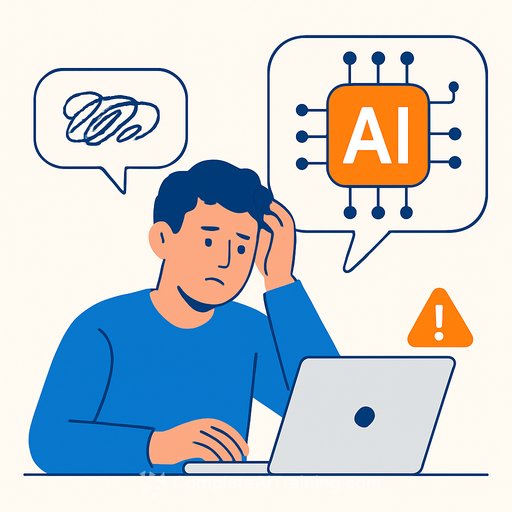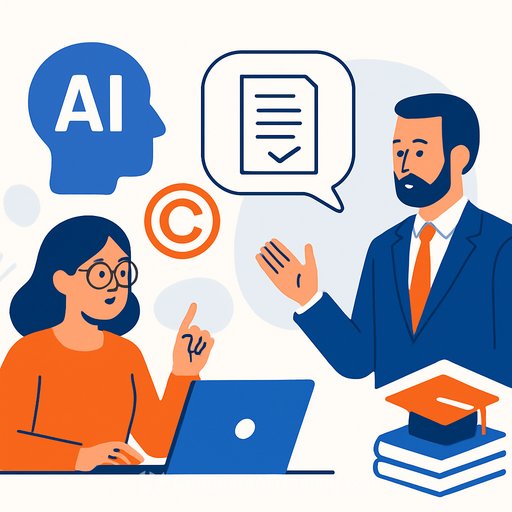AI Is Quietly Writing a Chunk of Press Releases-and Job Ads. Writers, Here's the Play
AI has found steady work in press offices. A new review in the journal Patterns shows corporate and government teams are using AI to draft press releases and job postings since late 2022.
Researchers analyzed thousands of texts from Newswire, PRWeb, and PRNewswire. Since November 2022, about one in four press releases were likely AI-generated, with higher rates in science and tech.
Job ads show similar signals: roughly 6-10% of listings on LinkedIn carried AI-written language, with small firms closer to 15%. The United Nations' English releases rose from 3.1% AI-likely text in Q1 2023 to 10.1% by Q3 2023, peaking near 13.7% by Q3 2024.
Adoption may have leveled off. Press releases peaked at 24.3% AI-likely in December 2023, then settled about half a point lower and stayed there. Job listings have dipped from their high. The UN is still climbing, but growth has slowed.
Outside corporate channels, AI shows up in consumer writing too. Of 687,000+ complaints to the Consumer Financial Protection Bureau between 2022 and 2024, about 18% were likely AI-assisted. People in areas with lower educational attainment were slightly more likely to use AI tools-an uncommon pattern for new tech.
What this means for writers
- The baseline is AI-sounding copy. Your edge is point of view, specificity, sourced claims, interviews, and proprietary data.
- Speed helps, trust wins. Fact-check, cite, and add context that generic models miss.
- Expect more "AI-first" drafts. Position yourself as editor-strategist who sets the brief, voice, and standards.
- Detection is shaky. Quality isn't-deliver clarity, accuracy, and tone consistency people can feel.
Where to use AI without losing your voice
- Ideation sprints: angles, headlines, FAQs, objections.
- First-pass structure: outline press releases or job ads before you write.
- Language variants: adapt tone for execs, media, candidates, and customers.
- Research scaffolding: gather starting points, then verify with primary sources.
A simple verification stack
- Cross-check key facts with original reports, company filings, or primary press pages.
- Use two independent sources before you publish numbers.
- Run entity, date, and quote passes to catch invented details.
Sample prompts that actually help
- "You are a corporate communications assistant. Goal: draft a 350-word press release for a mid-stage SaaS launch. Constraints: AP style, cite 2 real sources, include 2 stakeholder quotes as placeholders, avoid hype adjectives."
- "Rewrite this job ad for clarity and fairness. Keep it under 200 words, use plain language, list 5 must-haves and 3 nice-to-haves, remove gendered terms. Return in bullet points."
Pricing and policy
- Offer tiers: AI-assisted draft, human-edited standard, research-heavy premium.
- Disclose AI use if requested and define approval steps for quotes, stats, and claims.
- Track outcomes-open rates, coverage, backlinks, qualified applicants. Sell results, not word count.
Key stats at a glance
- Press releases: ~25% AI-likely since late 2022; peak 24.3% in Dec 2023; slightly lower since.
- Job listings: 6-10% AI-likely on LinkedIn; small firms near 15%; signs of decline from peak.
- UN press releases: 3.1% (Q1 2023) → 10.1% (Q3 2023) → ~13.7% (Q3 2024); growth slowing.
- CFPB complaints (2022-2024): ~18% AI-assisted; higher use in lower-education areas.
Why adoption looks different this time
Classic diffusion theory says early adopters skew younger and more educated. Low-friction, free writing tools flip that script by lowering the barrier for anyone who needs clean text fast.
That can amplify underserved voices, but outcomes depend on accuracy and accountability. Writers who bring both will stay essential.
Resources
- Patterns (journal)
- Consumer Financial Protection Bureau
- AI tools for copywriting
- Prompt engineering resources
Your membership also unlocks:






